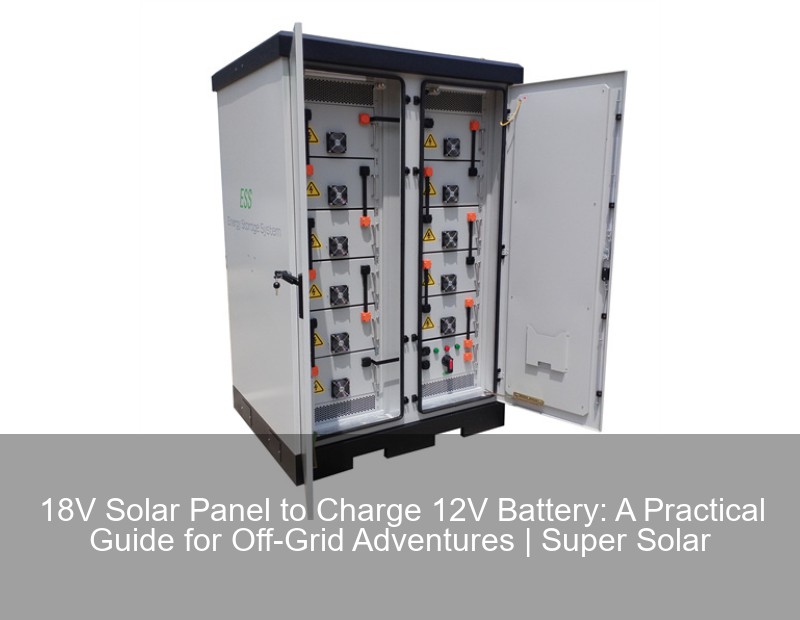18V Solar Panel to Charge 12V Battery: A Practical Guide for Off-Grid Adventures

Why Your 18V Solar Panel Isn’t Overkill for a 12V Battery
Let’s cut through the confusion: using an 18V solar panel to charge a 12V battery isn’t like using a flamethrower to light a candle. In fact, it’s a smart move when done right. Solar panels operate at their "peak voltage" under ideal conditions – which rarely happen in real life. That extra voltage headroom compensates for cloudy days, partial shading, and other solar mood swings.
The Voltage Drop Tango
Imagine your solar panel as a coffee maker and your battery as a sleepy college student. Without proper regulation (read: charge controller), that 18V java blast would fry your system. Here’s why the voltage mismatch works:
- 18V panels actually deliver 14-16V in typical operation
- 12V batteries need 13.6-14.4V for efficient charging
- MPPT controllers can harvest up to 30% more energy from the mismatch
Wiring Wizardry: Connecting Your Solar Workhorse
Last summer, I helped a friend power his ice cream truck using this exact setup. The secret? A three-step dance:
Step 1: Choose Your Weapon (Charge Controller)
- PWM Controllers – The budget-friendly "volume knob"
- MPPT Controllers – The energy-harvesting ninjas (worth the splurge!)
Pro tip: That 18V panel’s Voc (Open Circuit Voltage) must stay below your controller’s maximum input. Check specs like you’re reading a dating profile – carefully!
Step 2: Cable Calculations Made Simple
Use this cheat sheet for wire gauge:
- 10 feet distance: 14 AWG
- 20 feet distance: 12 AWG
- Add 2 AWG sizes for every 10ft beyond
Real-World Success: The Camper Van Case Study
Meet Emma, who transformed her 1987 VW Vanagon with:
- 1x 18V/100W flexible solar panel
- Victron MPPT 75/15 controller
- 100Ah LiFePO4 battery
Results? She now binges Netflix for 6 hours nightly while parked in Yosemite. More importantly, her system recovers full charge in 4.5 sun-hours – 22% faster than using a 12V panel.
Common Facepalms to Avoid
Don’t be like the guy who connected his panel directly to the battery "to save money." Spoiler: His battery now doubles as a boat anchor. Steer clear of:
- ?? Skip-controller suicide missions
- ?? Mixing battery chemistries like a mad scientist
- ?? Ignoring temperature compensation settings
Battery Chemistry 101
Lead-acid vs. lithium? It’s like comparing a mule to a racehorse. Lithium batteries can handle the 18V panel’s higher voltage range more efficiently, converting 95%+ of solar input versus 70-85% for lead-acid.
Future-Proofing Your Setup
The solar industry’s buzzing about two trends perfect for 18V-to-12V systems:
1. Smart Controllers with DC-DC Conversion
New controllers like the Renogy DCC50S combine solar and alternator charging – perfect for road warriors.
2. Lightweight Flexible Panels
At 2.9mm thick, these stick-on wonders are revolutionizing RV and marine installations. Just don’t try to fold them like origami!
So there you have it – your ticket to solar-powered freedom. Whether you’re brewing coffee in the backcountry or keeping drones charged on a film shoot, that 18V panel might just become your new best friend. Now go forth and harness some photons!